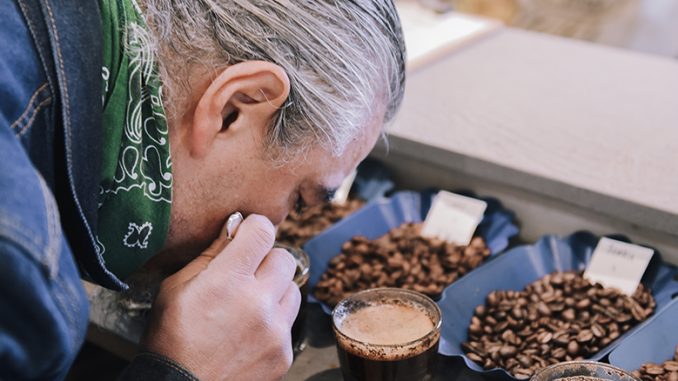
We learn how New Mexico native Paul Gallegos creates and sustains his philosophies.
BY ALEXA ROMANO
SPECIAL TO BARISTA MAGAZINE ONLINE
Photos provided by Alexa Romano
Before the sun rises, before cars accumulate on the freeway, before the city awakens, and before individuals begin to crave their morning cup of coffee, Paul Gallegos is already at least three batches into roasting coffee to keep Cutbow Coffee, his café and roastery, stocked with beans.
Cutbow Coffee is nestled in Albuquerque, N.M., where I am currently learning to roast and cup. Paul began roasting in the 1980s under Alfred Peet and continues to roast today. With almost 30 years of roasting experience now, Paul opened Cutbow Coffee in 2018.
My work shifts begin promptly at 6:30 a.m. When I arrive at the already illuminated Cutbow, the soothing whir of Gallegos’ Giesen roaster fills the space, along with the warmth of her powerful flames. Her name is Bibiana and she is painted blue, much like a clear stream. Paul created Cutbow in memory of his father, a devoted fly fisherman from a small town in northern New Mexico—hence the name “Cutbow,” a fusion of cutthroat and rainbow trout. Inside Cutbow you will find features of fly fishing everywhere—the café’s logo, its rainbow-trout-skin mural, its coffee blends named after New Mexican rivers, and even its roaster Bibiana, who not only is the color of water, but also is plated with metal sheets textured like fish scales. She is Cutbow in roaster form.
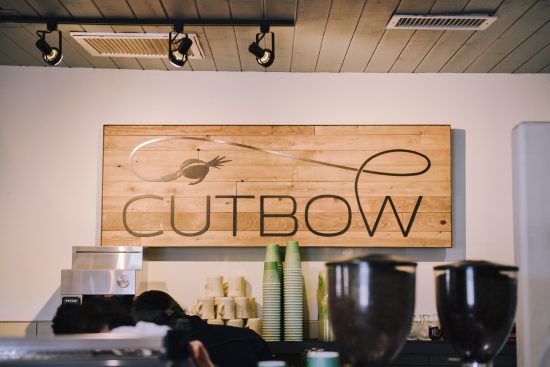
In keeping with COVID-19 demands, Cutbow’s interior has slowly transformed from an organized space suited for serving consumers into a storage area for burlap sacks of coffee arranged by origin across its floor. Cutbow has adopted a different aesthetic feel, as it was only a roastery and not a service café. It is in this cozy space that I learn all about Paul’s distinctive perspectives on roasting and cupping.
Here are three insights into how this veteran roaster crafts his philosophies, values, and expectations.
Pressure and Performance
Paul was trained on a 750-pound industrial roaster at Alfred Peet’s original warehouse. Despite the growing market demand for roasted coffee beans, there was always a standard of quality that Peet commanded. Peet was “exacting.” According to Paul, “Every single detail was measured. Peet carried a disciplined internal encyclopedia of how a single detail was attained, measured, and maintained.” Paul recounted his early roasting experience as one full of pressure and “with definite attention to detail and an unwavering commitment to perfection.” The sun never went down without the day’s roasted coffee being tasted in the cupping room. Paul, along with his cohort of roasters, brought his coffee for sampling to ensure quality.
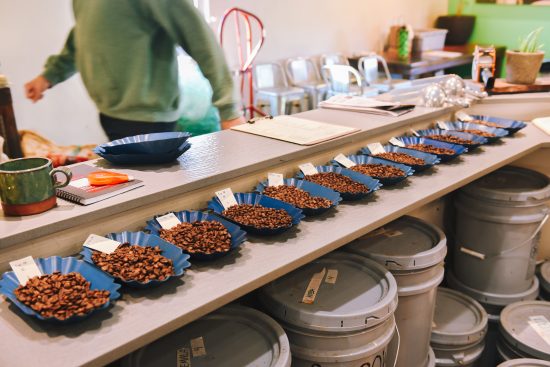
The cupping ritual following each roasted batch is ingrained in Paul’s philosophy at Cutbow. After each roast, Paul scoops fresh coffee into blue plastic trays to compare with the same roasts of the previous days. Sometimes this means that his cupping table displays a spread of 15 coffees. Additionally, every few weeks, Paul uses his small sample roaster to maintain taste and quality of his stored raw coffee. Decades of cupping have forged a ritual that is not an occasional practice for Paul, but rather a necessary and even natural one. It’s hard not to notice the pocket sewn into Paul’s apron made especially for his infamous silver tasting spoon.
Stewardship in Roasting
While Paul describes performance pressure in Peet’s cupping room, as an individual roaster Paul experiences a different type of self-imposed pressure. Roasters have the capability to pick and choose between the different origins they feature, the various coffee processing methods, and thus the numerous producer livelihoods they might support. Paul recognizes that roasters occupy unique positions in the coffee chain as links between coffee producer and coffee drinker; however, Paul believes that his roaster position “employs feelings of pressure, and not power.”
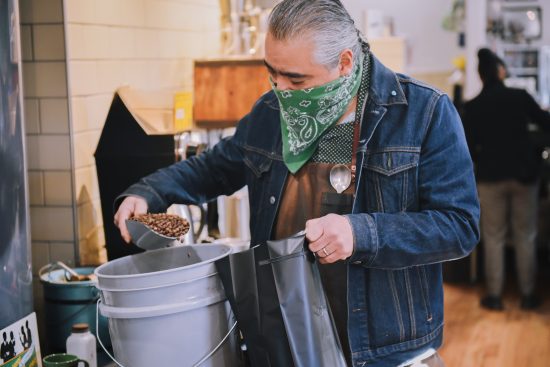
Paul’s self-imposed pressure refers to the justice he seeks for coffee producers. He states, “I not only feel pressure to do the coffee justice, but there is also a level of respect you have when you roast at that middle point between producer and barista.” Paul understands that “roasters create from what the coffee farmers have put a great deal of effort into.” He uses the term “stewardship” because for a short window of time, the roaster becomes a steward for the quality of coffee. Paul claims that “[roasters] have only 12 minutes to turn what the farmer did in years into what the barista will do seconds to pass on to the customers.” Roasters are the conduit for a brief moment for transforming a raw commodity into a consumable product. With this responsibility, the act of roasting becomes an act much larger than itself; roasting is a convergence of respect, pressure, and stewardship.
Meaning in Artisanal Roasting
For Paul, creating meaning in coffee entails being a steward for quality. In his own words, creating meaning is to “constantly coax the best possible flavor out of the coffee while I am roasting it.” Meaning is “to be attentive at the roaster and to have in mind what the cup will express depending on the approach done at the roaster.” The artisanal approach is Paul’s abiding philosophy, which is based on “sensory, memory, intuition, and goals.” Paul is constantly using sensory skills while roasting. The trier peg wedged inside his blue roaster, Bibiana, is smooth to the touch. Each motion of smelling and observing his roasting coffee requires Paul to handle Bibiana’s wooden trier. He does this with such frequency that the paint has entirely rubbed off—as Paul believes should be the case for all roaster triers.
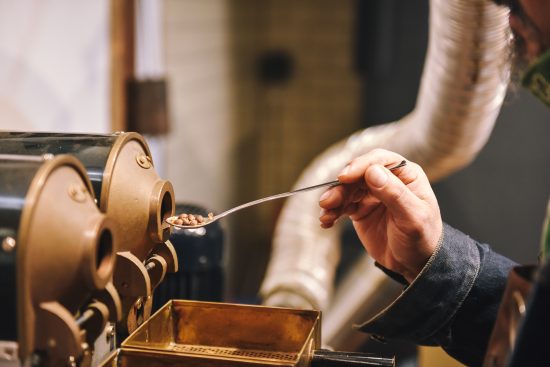
When asked about software that hooks up laptops to roasters, Paul acknowledges the progress and tremendous support such technical methods allow; however, he expresses that this is hardly an artisanal approach. Paul conveys that although one should not depend solely on the software to make the final judgment of a finished roast, software is extremely helpful in teaching. “I do see roasters using technology as resources for training, but once roasters get technical methodologies, they will close the laptop and start looking at the coffee again.” For Paul, “experience teaches best.” Roasting becomes meaningful through the artisanal approach: engaging with the coffee through all roasting stages, cupping each roast with intention, and keeping in mind the desired end flavor.

ABOUT THE AUTHOR
Alexa Romano is a recent graduate from Stanford University with an M.A. and B.A. in Cultural and Social Anthropology with a double minor in Ethics in Society and Photography. Her research concentrates on the coffee commodity chain and investigates the mystified, obscured, and ethical/ unethical relations that tether producer societies to consumer societies, with a focus on Costa Rican smallholder producers. Currently, Alexa is training as a roaster’s apprentice and freelancing with wellness tech companies. See her work here.

